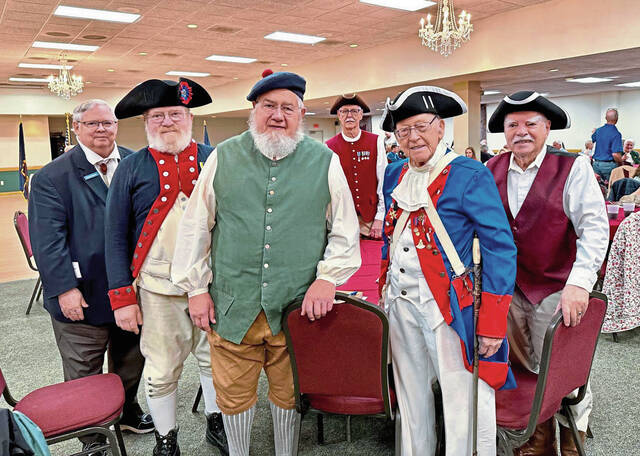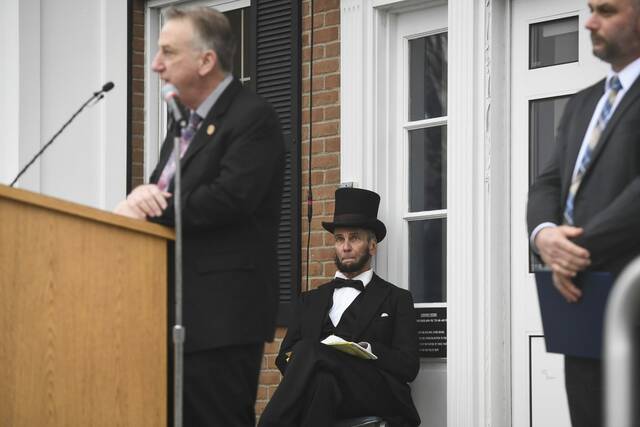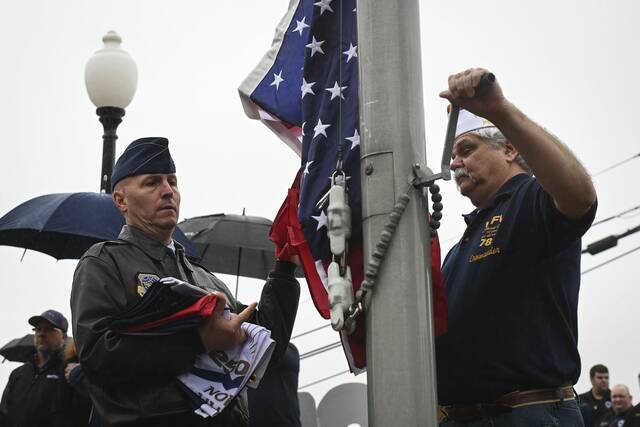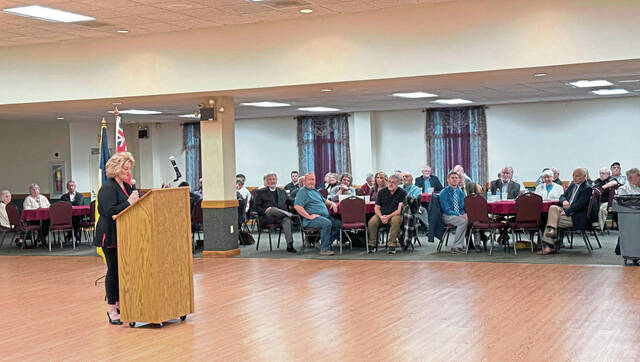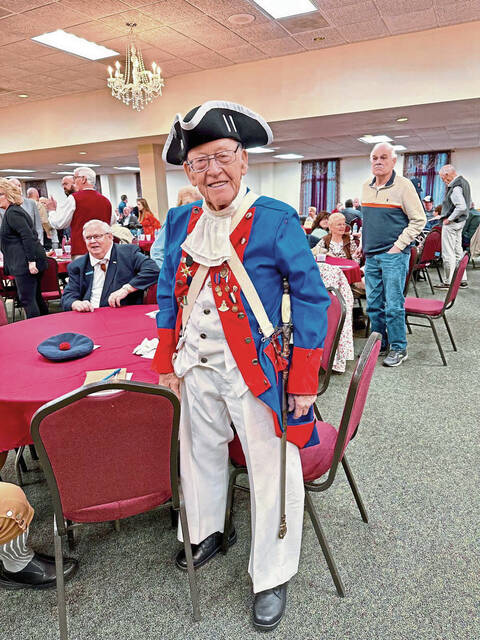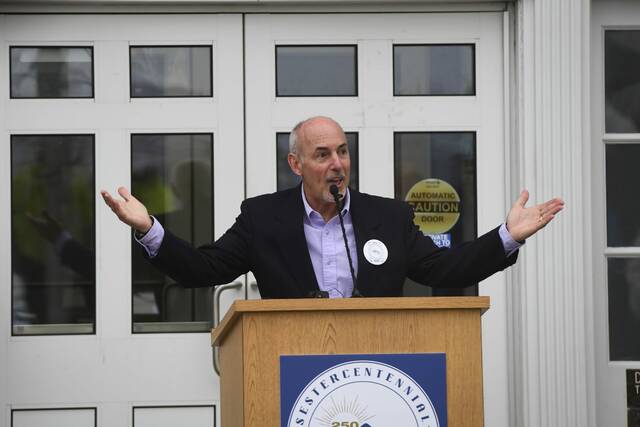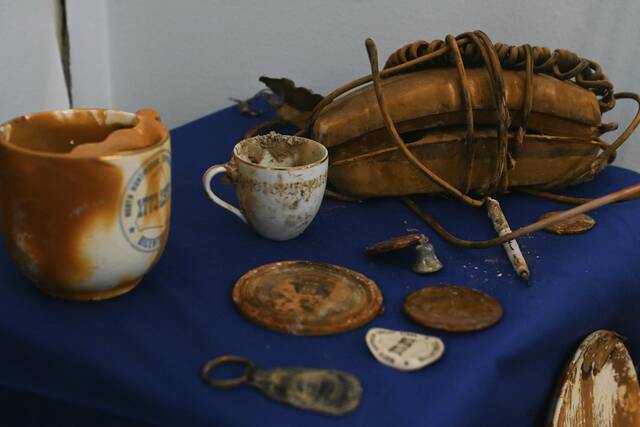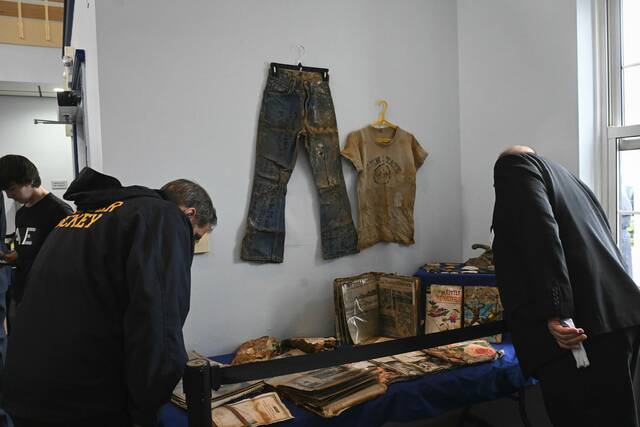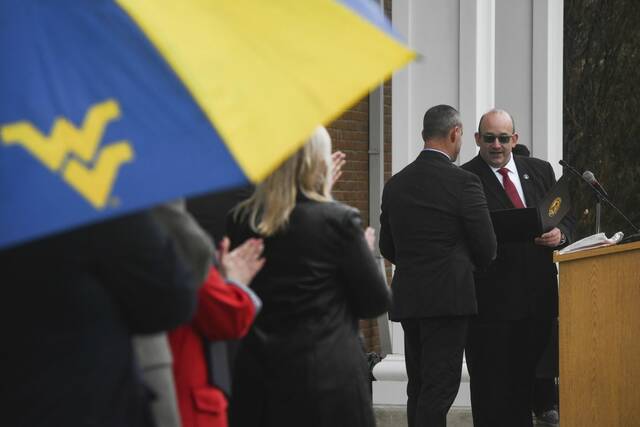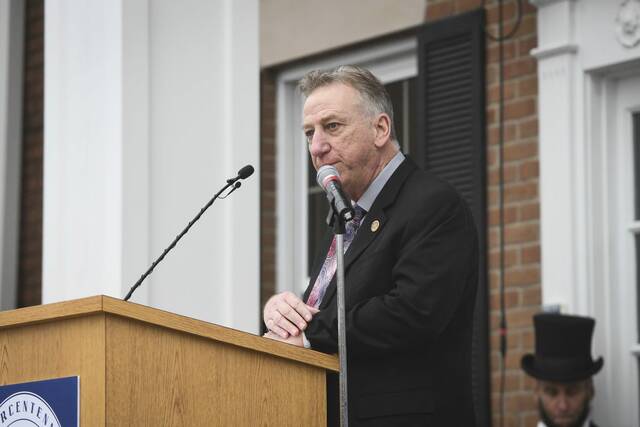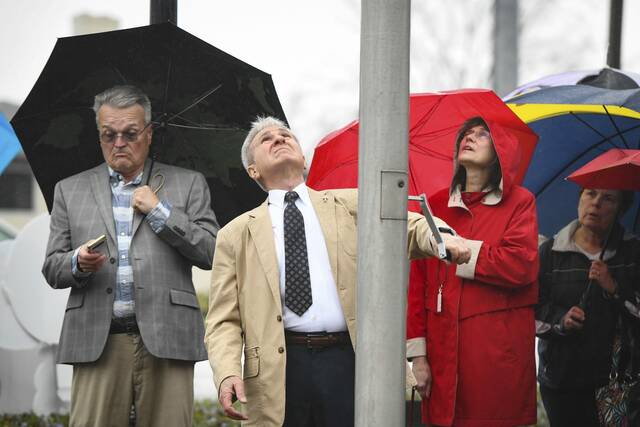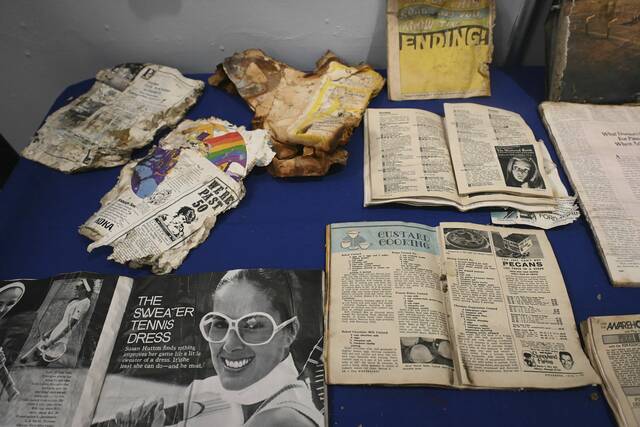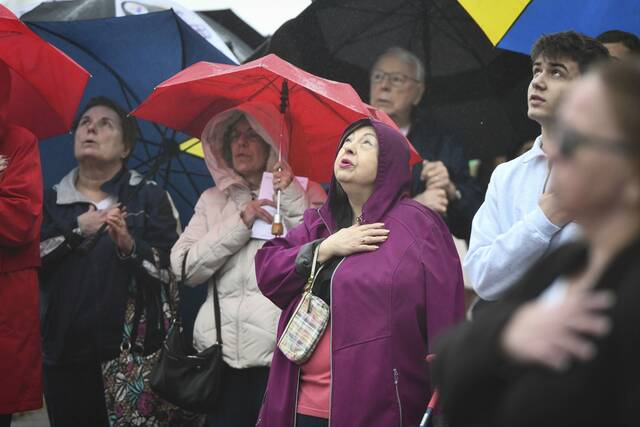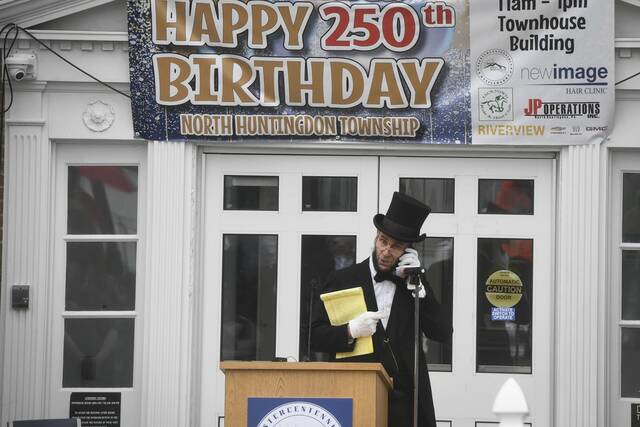North Huntingdon, Mt. Pleasant celebrating 250th anniversary
North Huntingdon and Mt. Pleasant Township officials celebrated the 250th anniversary of the founding of their municipalities Thursday with speeches on their history, colonial reenactors, an Abraham Lincoln portrayer, a commemorative coin and a new municipal flag.
Huntingdon Township was founded when Westmoreland County was founded 250 years ago on April 6, 1773, at Hanna’s Town, said Carl Huszar, president of the Norwin Historical Society. North Huntingdon was not formed until 1790, when North, East and South Huntingdon became separate municipalities out of Huntingdon Township. The county was the 11th to be founded in pre-Revolutionary Pennsylvania, Huszar noted.
Huszar reminded about 150 people who stood through intermittent rain for the 250th anniversary ceremonies outside the North Huntingdon Town House that they were standing on historic ground. The Lincoln Highway, the nation’s first cross-country road when it was finished in 1923, went through North Huntingdon, he said.
At the time of the county and township’s founding, the region “was the frontier of a burgeoning nation,” said Westmoreland County Commissioner Doug Chew.
With the U.S. flag, state flag and county flag raised on poles in front of the Town House, Chew gave the audience a lesson in the county flag’s history. The county’s founding fathers selected a design with the British Union Jack in one corner, denoting their pre-Revolutionary War allegiance to Great Britain and King George III. But it also featured a coiled rattlesnake with its fangs wide open, ready to attack, Chew said.
That occurred some two years later, with the outbreak of the American Revolution in 1775.
An Abraham Lincoln portrayer, Rick Miller of Cranberry, told the audience that John Irwin, founder of Irwin, surveyed the land in 1851. Miller, who has been portraying Lincoln for about 30 years, offered the crowd a humorous parody of Lincoln’s famous Gettysburg Address of 1863, noting the momentous occasion on which he spoke in another Pennsylvania town along the yet-to-be created Lincoln Highway.
For those who wanted to take a step back and look at history 50 years ago, there were newspapers, magazines, photo albums, clothes, a telephone, an iron and commemorative plates from 1973 that were inside a 4-by-2-foot vault buried in front of the Town House in August 1973, when the township celebrated its bicentennial.
The time capsule was filled with water when it was unearthed last week, Huszar said, damaging several of the papers and a pair of blue jeans and coating the iron and telephone in mud.
Huszar said he hopes the township will collect items at an anniversary celebration in September for another time capsule, and add some items from the 1973 capsule.
Mt. Pleasant’s Norvelt
The celebration for Mt. Pleasant Township’s 250th anniversary was, ironically enough, in Norvelt, the municipality’s youngest village. It drew national attention because of its founding amidst the Great Depression as a model community in the mid-1930s.
Norvelt was called Westmoreland Homesteads when it was established in April 1934 by the federal government as part of a New Deal homestead project. The community’s current name was derived from President Franklin Roosevelt’s wife, Eleanor, who made the Westmoreland Homesteads her pet project.
Mt. Pleasant Township was founded on April 6, 1773, as one of the 11 original townships of the newly created Westmoreland County.
“To see 250, it’s very cool,” said Raymond Zimmerman, previous secretary-treasurer of Mt. Pleasant Township, who summarized the township’s 250 years of history. “Here we were in 1773, we didn’t even have the Revolutionary War yet, and here we were becoming a municipality. I came in right after the bicentennial, and we have so much more information since then, so much history to add to our story.”
Mt. Pleasant Township had been a huge coal mining area, with what was then the nation’s largest coal mine in the village of Mammoth, Zimmerman said. It continued to mine even after the Mammoth Mine disaster of 1891, in which 109 miners were killed.
The township was an area for the production of coking coal, Zimmerman said. The coke was burned at high temperatures in beehive ovens to remove impurities from coal, which was then shipped to mills for the production of steel.
The area also was a manufacturing home for glass, with Zimmerman noting that the former L.E. Smith Glass was so well respected that it was commissioned to produce Henry Ford’s Model T headlights.
“It’s hard to believe that we’ve been here for that many years, and how things have changed throughout the history of the township,” said Duane Hutter, chairman of the township’s board of supervisors.
Joe Napsha is a TribLive reporter covering Irwin, North Huntingdon and the Norwin School District. He also writes about business issues. He grew up on Neville Island and has worked at the Trib since the early 1980s. He can be reached at jnapsha@triblive.com.
Remove the ads from your TribLIVE reading experience but still support the journalists who create the content with TribLIVE Ad-Free.

